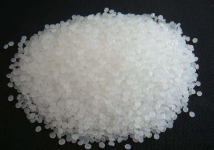read: 1125 time:2025-06-24 08:16:00 from:化易天下
Why Phenol is Used as Disinfectant: An In-Depth Analysis
Phenol, a chemical compound with the formula C6H5OH, has been widely recognized and utilized for its disinfectant properties. This article will delve into the reasons why phenol is used as a disinfectant, exploring its chemical characteristics, historical significance, and application in modern hygiene practices.
Phenol's effectiveness as a disinfectant stems from its chemical structure. The hydroxyl group (-OH) attached to the aromatic ring makes phenol a potent antimicrobial agent. This structure allows phenol to denature proteins and disrupt cell membranes, effectively killing or inhibiting the growth of bacteria, fungi, and viruses. When asking "why phenol is used as disinfectant," it's important to note that its ability to cause protein precipitation and membrane lysis is central to its germicidal activity.
Phenol has a long history of use in disinfection, dating back to the 19th century when Joseph Lister introduced it as a surgical antiseptic. The success of phenol in reducing infections in surgical procedures marked a turning point in medical practices. The historical significance of phenol highlights its effectiveness, which is one reason why phenol is used as a disinfectant even today. Despite the development of newer disinfectants, phenol remains a benchmark for comparison due to its proven track record.
In contemporary settings, phenol is still used in various disinfectant formulations, particularly in healthcare environments. It is employed in sterilizing medical instruments, surfaces, and even in some household cleaners. The reason why phenol is used as disinfectant in these scenarios is due to its broad-spectrum activity and ability to destroy a wide range of pathogens. Additionally, phenol is often used in combination with other compounds to enhance its disinfectant properties, providing a more comprehensive solution to microbial contamination.
While phenol is an effective disinfectant, it is also toxic and must be handled with care. High concentrations of phenol can cause chemical burns and systemic toxicity if absorbed through the skin or inhaled. This duality of being both a potent disinfectant and a hazardous substance underscores the importance of proper handling and dilution in its use. When considering why phenol is used as a disinfectant, it's crucial to balance its effectiveness with the necessary safety precautions to prevent harm.
In summary, the reasons why phenol is used as a disinfectant are multifaceted, involving its chemical structure, historical significance, and continued relevance in modern hygiene practices. Its potent antimicrobial properties, proven effectiveness, and versatility make it a valuable tool in the fight against infections. However, due to its toxic nature, careful handling and adherence to safety guidelines are essential when using phenol in disinfectant applications.

Jincheng Petrochemical's 300000 ton polypropylene plant successfully trial production, 2024 polypropylene market analysis

The ABS market remains sluggish, what is the future direction?

Market differentiation of bisphenol A intensifies: prices rise in East China, while prices generally decline in other regions

The production method and process flow of silicone acrylic lotion, and what are the common raw materials